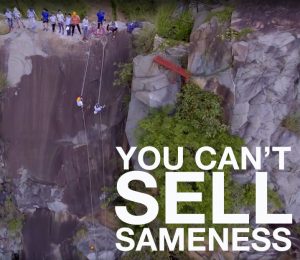
It happens. Sometimes you are on a ridiculous deadline and you have footage coming in from 6 different places all 6 different times. Maybe you’re working on a project that combines footage from archived or otherwise unrelated shoots. There are countless reasons why you might find yourself editing a project that includes media from multiple drives, cards, photo libraries, whatever. If this is the case, do not lose hope; you can still consolidate it all in one place, after the fact.

So I’m here to help out, drawing from my own experience. I hope this is useful to others who have been, until now, utterly confounded. Here’s how the file consolidation process works in real life. Click on the screenshots for full-size images.
The Scenario:
You started out fine. You shot your footage, converted it, labeled it, and dumped it all on a Firewire or Thunderbolt drive. You did that, right? You imported it properly into FCPX, leaving your ProRes footage in its existing location so as not to clog up that annoying “Movies” folder on you system drive. Well done and good on ya’. But then your client came along with a new hard drive full of new Pro Res footage and they needed you to include it in a new version and deliver it by the end of the day. You don’t have time to move all the media to your drive, so you just plug theirs in and start cutting. Let’s make this even uglier: you also have several new photos on your desktop and several new clips on your local hard drive, and they all need to be in your edit, too. Of course, ya jerk, you should have imported and organized everything properly up front, but you were short on time and, like I said, you’re human. At the end of the day, you’ve sent off the new draft, but you still have the problem of your media living in different neighborhoods. Now you need to consolidate it all in one place.
Step One—“Duplicating” is just “Re-Referencing”:
First thing’s first: Leave everything plugged in! With all your relevant drives/media connected and your project open and free of errors, go back to the project library panel at the lower left corner of the screen (see above). Control click on your project and from the drop down menu click “Duplicate Project”. When FCPX asks you how you want to do this, choose your final destination drive and select the middle option (“Duplicate Project and Referenced Events”). This process can take a little while. If you get the spinning pinwheel of doom, don’t panic, this is not FCPX beta. If it says that FCPX is “preparing to duplicate” your project, it probably is. Don’t force quit or go searching for preferences to trash, just go get a coffee and relax.
Eventually, a new project will appear in you project library. When you click on it, it will take you to your new edit where everything seems to be in place. But it isn’t.
Step Two—Actually MOVE Your Media:

So this part is important: within FCPX, you now need to select the new event on your destination drive. Go to “File > Organize Event Files”. You will get another warning. Click “Continue”.
Now FCPX starts doing the real work of copying the actual media to your destination drive. This process can really take a long time depending on what you’re working with. So get another cup of coffee. Screw it, forego the coffee and take a nap. If you want to see the process in action, go back in Finder to that “Original Media” folder on your destination drive, and you’ll see the alias files, one by one, becoming real media files. This is what you wanted all along.
What’s Happening:
The Finder screenshots below should give you an idea of what’s going on behind the scenes:
Before “organization”, aliases were created and your new project was re-referenced:
During organization, the aliases—one-by-one—became real media files. They start getting bigger:
Following organization, all your media is there, right where you want it:
Step Three—Test It:
Quit FCPX. Unplug your client’s drive. Drag the footage out of your “Movies” folder and put it somewhere else. Eject your SD cards. In other words, manually disconnect any media you can think of except for the destination drive where you are hoping everything now lives. Restart FCPX and, in your event library, click on the new project on the destination drive. If your project is intact with no disconnected media, you are good to go. Empty the trash or whatever you gotta do.
A Couple Warnings:
Of course, I’m not saying you should delete everything in a hurry. Make sure you’re not trashing media you haven’t used yet. Remember: FCPX only copied the footage that is already in use in your edit.

Admittedly, I have had to do this on more than one occasion. I’m working on a fun little short now from a motorbike trip me and my buddy Gary did around the southern suburbs of Saigon, Vietnam. Believe me, the footage comes from everywhere (GoPros, iPhones, DSLR, etc.) Now I want to take that project to a pub, watch the futbol, and finish up this goofy little edit. The above process is exactly what I did, using a small—but fast— little G-Force firewire drive. All good. And it will happen again. I’m sure.
Let me know if this helped you as an editor. Of course, if you have a better way of consolidating and cleaning up a convoluted FCPX edit, I’m all ears. Please share it. And do be nice.









This is a good method to get everything you need onto another hard drive, but it doesn’t consolidate events. Have you found an easy way to combine events?
If I’m ready to archive a project, I’ll select duplicate project and used clips which works well, but if I just want to consolidate into one event the only way I’ve found is to drag everything into a new event, then switch the project event references.